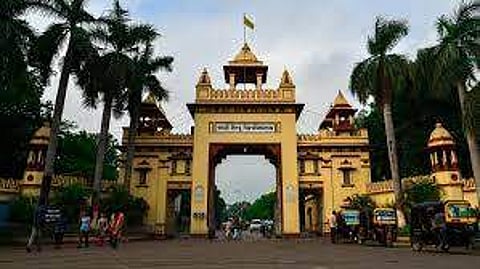

BHU scientist warns against 'unscientific' tree plantation
Even as Uttar Pradesh undertakes a massive tree plantation drive, a retired scientist and river engineer from the Banaras Hindu university (BHU) has warned against "unscientific plantation of trees which could aggravate flood threat".
Professor U.K. Chaudhary, in a letter sent to Chief Minister Yogi Adityanath, has urged him to caution concerned officials against unscientific tree plantation in flood zones. Explaining his point, Chaudhary said, "Nature provides the hair in the body of humans and in that of different creatures at the specific location in a specific manner for a specific purpose. Its growth is based on internal and external conditions of the location of the body and for specific purposes.
"Similarly, the plantation in the river body where we live either in flood plain or in basin, requires the specific knowledge of boundary conditions of soil (anatomy), its form and location (morphology) and ground and surface water (dynamics). If these conditions are not met in the case of tree plantation in the flood plains, the results may be disastrous."
He further explained that the plantation in river flood plains may either enhance the sedimentation or erosion and may cause the drastic change in river morphology and dynamics. "It may enhance the amplitude of flood height and may cause the erosion of vast areas of land. Thus, plantation in wrong locations may intensify flood and meandering," he warned.
The flood plain of the river is demarcated on the land from where the slope of the land is instantaneously increased and meets the river. With this slope criteria, the flood plain of the convex bank, the sandbed side, falls in between 0.5 to 4 times of the minimum average width of the river. And the concave bank, the city side bank, is 0.1 to 1.0 times the width.
He said that there must not be a plantation on the sand bedside flood plain because the high turbulence of the flood will be dissipated by plants and deposition of sand will be at a higher rate causing the rise in pressure drag forces. Thus, he said, the plantation will enhance the flood height.
Further, the plantation should also be restricted in the first half portion of the concave bank, city bank side. For example, in Varanasi, the plantation will intensify the sedimentation on Ghats of the Ganga from Nagwa to Dashashwamedh Ghat. This is because this region exists in the zone of diverging streamlines.
